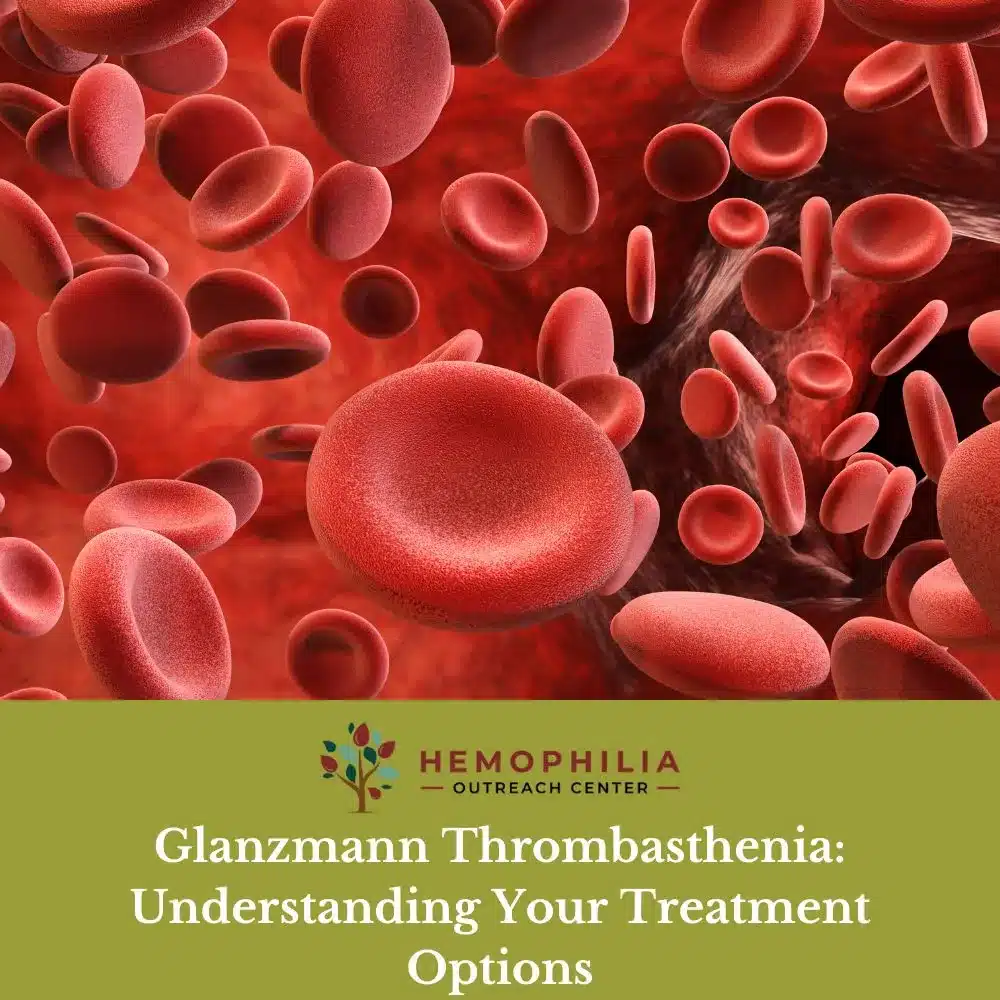Glanzmann Thrombasthenia is a rare bleeding disorder that necessitates a nuanced approach to care and management. This detailed guide not only elucidates treatment strategies but also underscores the significant support network available through the Hemophilia Outreach Center (HOC) for residents of Wisconsin and upper Michigan.
Understanding Glanzmann Thrombasthenia
Defining Glanzmann Thrombasthenia
Glanzmann Thrombasthenia is characterized by the platelets’ inability to form clots properly, leading to excessive bleeding. Understanding the genetic underpinnings and physiological manifestations of this disorder is the first step toward effective management.
Symptoms and Early Detection
Symptoms include bleeds that are especially prevalent in the mucous membranes. This can lead to severe nosebleeds, heavy periods, GI bleeds, oral bleeds and/or hemorrhaging with childbirth. These bleeds can be frequents which can severely impact an individuals’ quality of life. Early detection and diagnosis through comprehensive blood tests and genetic analysis are crucial for timely intervention.
Advanced Treatment Approaches
Latest in Treatment Innovation
The landscape of Glanzmann Thrombasthenia treatment is evolving, with traditional treatments like platelet transfusions being complemented by future therapies including gene therapy and non-platelet injections.
Surgical Interventions and Considerations
In severe cases, surgical interventions may be necessary. The decision for surgery, however, comes with its considerations, emphasizing the need for specialized surgical expertise and post-operative care.
The Hemophilia Outreach Center: A Pillar of Support
Specialized Care at Green Bay and Wausau
The Hemophilia Outreach Center, with its specialized care teams in Green Bay and Wausau, stands as a beacon of hope for individuals grappling with Glanzmann Thrombasthenia. Tailored treatment plans, developed by a multidisciplinary team of experts, are designed to meet the unique needs of each patient, ensuring the most effective management strategies are employed.
- Green Bay Location: At the heart of Green Bay, HOC offers a comprehensive range of services, from diagnosis to advanced treatment options for Glanzmann Thrombasthenia. For more information on the Green Bay team and the services offered, visit the Green Bay Care Team page.
- Wausau Location: Serving the upper Michigan and northern Wisconsin regions, the Wausau care team is dedicated to providing exceptional care and support for those affected by Glanzmann Thrombasthenia. Details about the Wausau location and its services can be found on the Wausau Care Team page.

Beyond Medical Treatment: HOC’s Holistic Approach
HOC’s commitment to patients extends beyond medical interventions. Through patient education sessions, support groups, and advocacy initiatives, HOC takes a holistic approach to care, ensuring that patients and their families are well-informed, supported, and empowered throughout their journey with Glanzmann Thrombasthenia.

Navigating Life with Glanzmann Thrombasthenia
Living a Full Life: Strategies and Support for Glanzmann Thrombasthenia
Living with Glanzmann Thrombasthenia undoubtedly presents unique challenges, but it also opens avenues for managing the condition proactively, ensuring those affected can lead rich and fulfilling lives. Beyond the medical treatments for controlling bleeding episodes, a holistic approach focusing on lifestyle adaptations, emotional well-being, and community support plays a crucial role in enhancing quality of life.
Practical Strategies for Daily Management
Healthy Lifestyle Choices: Adopting a balanced diet rich in iron and vitamins can help manage symptoms of anemia often associated with Glanzmann Thrombasthenia. Regular, moderate exercise, with precautions to avoid injury, is encouraged to maintain physical health and mental well-being.
Bleeding Precautions
Understanding how to minimize risks of bleeding in everyday life is vital. This includes using soft-bristled toothbrushes, wearing protective gear when engaging in sports, and avoiding certain medications that can exacerbate bleeding risks, such as NSAIDs.
Emergency Preparedness: Individuals with Glanzmann Thrombasthenia and their families are advised to have a plan for dealing with bleeding episodes, which includes knowing when and how to apply pressure to a bleed, when to head to the emergency room, and having a medical alert bracelet or card that informs others of their condition in an emergency.
The Importance of Community and Connection
The value of a supportive community cannot be overstated. HOC fosters a sense of belonging, offering a space for individuals and families to connect, share experiences, and find mutual support.
Looking Ahead: Innovations and Advocacy
Research Frontiers: The Promise of New Treatments
The ongoing research into gene therapy and novel pharmaceuticals holds promise for a future where Glanzmann Thrombasthenia can be more effectively managed or even cured. HOC remains at the forefront of advocacy for research and access to emerging treatments.
Policy and Access: Advocating for Patient Needs
Beyond individual care, there’s a broader role for organizations like HOC in advocating for policies that improve access to treatments and support for people with rare disorders. Their efforts in policy advocacy ensure that the needs of the Glanzmann Thrombasthenia community are heard at both state and national levels.
Conclusion: Empowerment Through Expert Care and Community Support
Managing Glanzmann Thrombasthenia is a complex journey, one that the Hemophilia Outreach Center navigates alongside its patients with empathy, expertise, and comprehensive support. Through its specialized services in Green Bay and Wausau, HOC ensures that individuals and families affected by Glanzmann Thrombasthenia have access to the best possible care and a strong, supportive community, empowering them to lead fulfilling lives despite the challenges of the disorder.




